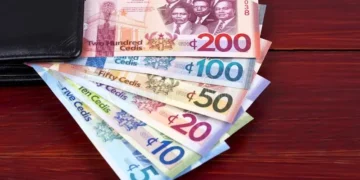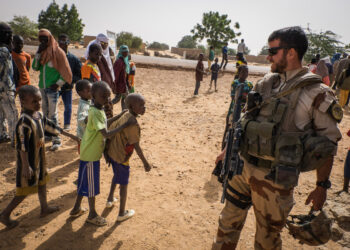Is the perception of beauty the same for every society, or does it vary from culture to culture? Interestingly, people have different perceptions about beauty, its definition, what it is made up of, and even what qualifies a person to be called beautiful. Different cultures define beauty based on their unique values, traditions, historical context, and social norms. Beauty is viewed differently by people all over the world, but what is the mark of beauty in the African setting? Is it one’s physical look, character, or where one comes from? Interviews on the subject were carried out randomly with people of different ages, genders, ethnic groups and social classes. The opinions of the respondents on what given by the respondents on what they think beauty is all about, may be most worthy of your attention. Join me in this article as we delve deeper into the concept of beauty worldwide and especially in Africa.
Categorization of African Beauty
1. Facial and Skin Beauty: In some cultures, beauty is primarily associated with physical appearance, specific body proportions, and youthful features. The first thing that comes to mind when beauty is mentioned is a beautiful face. To some, beauty is how attractive a person is, physically, meaning no blemishes, no scars, smooth skin, an appealing skin colour, good and attractive clothes, etc.
2. Full Figures: One cannot talk about beauty in our current system without mentioning hair, makeup, big busts and buttocks, and six-packs for men. Being thin isn’t desired in most African settings like South Africa, Ghana, Nigeria, Mauritania, etc. In fact, in some Nigerian cultures, as soon as a woman gets married, she is taken into a fattening room for a couple of weeks and fed well before being released to her husband. When you are too skinny, people think you don’t feed well. So people do anything to have a full figure just to look beautiful.
3. Skin Lightening: Many Africans have been made to believe that beautiful skin must always be lighter and white. This has increased the urge for lighter skin among many people. It is believed that dark skin symbolizes ugliness and low social status, while lighter skin signifies beauty and glamour. Consequently, many African women avoid the sun and anything that might darken their skin. The quest for this beauty leads some Africans to skin bleaching and surgeries. Therefore, the lighter the skin, the more beautiful you are perceived to be.
4. Long Hair: In Africa and most continents, long hair is perceived to be beautiful. This has led to a craving for longer hair among many women. It is believed that a woman’s hair is her crown of glory, a sense of pride, proof of femininity, and a means of seduction. So the longer the hair, the more attractive and beautiful one looks.
5. Beads: Wearing Beads, a type of jewellery worn around the waist, neck, wrist, ankles, or hips, originates from West Africa. They are traditionally worn by women as a symbol of beauty, sexuality, femininity, fertility, well-being, or maturity. Beads actually originated in ancient Egypt, where they were known as girdles. Egyptians wore them around their waists or lower abdomens. Modern-day people from many African cultures, including Ghanaians, Senegalese, Yorubas, Igbos, Swahilis, and Mijikenda, wear waist beads, but each culture has its own reasons. For instance, beads are used in ceremonies as a symbol of seduction in the Mursi culture.
6. Tribal Marks and Scarification: These marks are given to children at their outdooring ceremony eight days after birth, especially in the northern parts of Ghana, Ethiopia, South Sudan, and Papua New Guinea. Tribal marks and scarification are decorative marks of beauty, pride, and belongingness. In the past, a woman or man would have scarification marks that distinguish them from others, tell their rank in society, family, clan, and tribe, and symbolize their beauty or strength. In most African cultures, it was a major aesthetic and cultural component, as seen in sculptures in museums worldwide. Scarification patterns on sculptures are not only marks of beauty but also marks of one’s lineage and, in some cases, protection against evil spirits.
7. Face and Skin Tattoos: Tattoo culture in the recent history of North Africa tends to be most prevalent in Morocco, Algeria, Libya, and Egypt. This tradition has been around for centuries and has been a major source of the people’s sense of beauty, pride, and belonging. In traditional times, the practice made a person more attractive to the opposite sex. Men and women generally received tattoos on their faces, buttocks, thighs, lips, chins, foreheads, necks, backs, stomachs, and calves. This practice is not only in Africa but is also prominent among the indigenous people of New Zealand, the Māoris.
8. Lip Plates: The lip plate, also known as a lip plug, lip disc, or mouth plate, is a form of body modification using increasingly large discs, usually circular and made from clay or wood, inserted into a pierced hole in either the upper or lower lip, or both, thereby stretching it. These practices are mostly found in Sudan, Ethiopia, and also in Mesoamerica and coastal Ecuador. In some African countries, a lower lip plate is usually combined with the dental extraction of two lower front teeth, sometimes all four. Many sources have suggested that the plate’s size was a sign of social or economic importance in some tribes, female strength, self-esteem, and beauty.
9. Ear Stretching: Ear stretching is popular for both males and females in Africa and South America. People first pierce their ears and use weights to eventually stretch out their earlobes until they are almost shoulder length. This is done as a sign of beauty and tribal affiliation. The longer the ear, the more beautiful one looks.
10. Body Piercing: Body piercing, a form of body modification, is the practice of puncturing or cutting a part of the human body, creating an opening in which jewellery may be worn. Piercing was historically found in African and American tribal cultures. Pierced adornments were spotted by the Dogon people of Mali and the Nuba of Ethiopia, among other tribes, as a ritual symbol and body beautification. The more the pierces, the more beautiful one is perceived.
11. Neck Rings: Moving out of Africa, the Padaung women of Myanmar are famous for stretching their necks—by means of coiled brass neck rings—to a length of about 15 inches (38 cm), pushing down the collarbone, compressing the rib cage, and pulling up about four thoracic vertebrae into the neck. Many cultures and periods have made neckrings, with both males and females wearing them at various times. Wearing a neck-ring is evidently a key indicator of wealth, status, and a true definition of beauty. Thus, the longer the neck, the more beautiful one is perceived.
12. Heart-Shaped Faces: According to research conducted in South Korea, the current rage is undergoing plastic surgery to make one’s face appear more heart-shaped. This procedure involves breaking the jawbone into three parts, removing the middle part, and fusing the other two together to create a pointed chin. This face shape is seen as the most beautiful facial structure of South Korean women.
13. Beauty is Religion: To some, a beautiful person is one who is religious, following the statutes of their maker and religion. Your ability to do what your religion says automatically makes you beautiful. Thus, living a life according to the decrees of one’s religion without going contrary. Practicing religious belief could reflect in one’s physical looks and attitude as well.
14. Beauty is also the Heart, Mind, and Character Contrary to physical looks, beauty is also perceived as an innate trait. Inner beauty refers to good conduct, and exterior beauty refers to physical attractiveness. According to Diana-Abasi Ibanga, an author and lecturer at the University of Calabar, Nigeria, beauty in Africa is defined as a union (or harmony) of physical attractiveness and good conduct. For someone to be called beautiful, they must not just look good and astonishing but must also have good character, be well-behaved in all aspects, and treat others with respect. A beautiful person is one who has a good heart and can relate well with others. They must also be sympathetic and empathetic in all respects. A beautiful person must also think wisely, deeply, and intelligently. So, to some Africans, beauty is not just about the physique but also what lies within. Both internal and external beauty are required for someone to be considered genuinely beautiful. Lacking one or the other of these halves means one has only an incomplete beauty.
Functionality and Purpose of Beauty: According to Diana-Abasi Ibanga, a concept important for beauty in African philosophy is functionality. To put it bluntly, beauty is not for beauty’s sake. But what is its function? Beauty is communal rather than individualistic. Beauty must serve to communicate values, norms, morals, and purpose. Beauty must edify the community. Beauty has this function to promote culture and values, which can and will differ from community to community. Ibanga explains: “The concept of beauty in Africa is objective in that it communicates a communal standard, but it is also subjective in that the standard of beauty is different from community to community.”
Conclusion
With this, we can say that beauty lies in the eye of the cultural beholder. As Immanuel Kant would emphatically put it, “Beauty is in the mind of the person beholding the object, and what is beautiful to one observer may not be so to another.” He believes that aesthetic judgment is based on feelings, in particular, the feeling of pleasure. What brings pleasure is a matter of personal taste. Therefore, what may seem beautiful to one may not seem beautiful to another, and vice versa. The most important fact is that we embrace each other’s belief systems about beauty for social, cultural, and economic cohesion. It is also important to know that we are all beautiful just the way we are and must accept ourselves for who we are. As indicated, we must strive to possess both kinds of beauty no matter where we find ourselves in the world.































